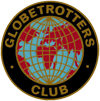U. S. Soldiers Home, Washington: during a century of travel (well 78 years!) both in and out of service I have travelled to over 150 countries (I count both North and South Dakota as countries) and for some reason have jotted signs and happenings that I thought funny at the time (and now wonder why). So here is the perfect opportunity to share some of my anecdotes.
Nairobi, Kenya. Because of the many pick pockets in Nairobi they are thinking of renaming Nairobi, Nairobbery.
Home member Donald French (now dead) in his eighties went with a group of young people from England on a truck trip thorough Africa. Each had an assignment: get wood for fire, cook, be a guard of their possessions at night etc. One night they decided they did not need a guard and all their shoes were stolen that night! As some had big feet it was difficult to get replacements. They became native in a hurry!
The Masai in Kenya have a drink made of cow’s blood and urine. Not available at the bar in our lodge. This cow’s milk urine combination drink is suppose to cure stuttering and athletes feet. One of the Masai wearing a blanket and carrying a spear surprisingly came into the bar of our lodge leaving his spear outside and said something to the bar tender. The Masai undid his handkerchief and took out tip money made from posing for pictures and ordered a Tusker Beer. The bar tender who was in Western Dress talked with him in Masai. After the Warrior left I commented to the bartender: “You speak Masai.” He answered: “I am Masai.”
The Masai warriors put red stuff in their hair. I thought maybe it was to keep flies away. Two were looking in the rear view mirror of our Landrover and I talked with them as best as I could and asked them why they put that stuff in their hair. They relied: “To look beautiful.”
At Salt Lick Lodge in Kenya, we were told to put down at the desk before retiring what animals we wanted to be awaken for if they came to the water hole. I put down: “Everything but mosquitoes.”
In the middle of the night someone was knocking at my door and shouting: “Elephants! Elephants!” I woke up not knowing where I was and wondered why someone was at my door hollering “Elephants! Elephants!” The hotel had an underground tunnel that led to a darkened bunker. No lights allowed. No flashlights. No Flashbulbs etc. Here you could watch the animals drink. At the bar they had a sign: “don’t bother the animals while drinking and vice versa”.
When we returned to the hotel from watching the animals, one of the couples suddenly realised that their small son was missing. Father and Mother had each thought the son was with the other. The hotel staff seemed concerned and said baboons sometimes attack small children. Don’t know if this is true or if we were being told this to make our Safari more exciting. By the way, safari just means trip. They organised us to form a line and to walk out into the bush as a search party. But before we got started someone went back to the dark bunker and found the child asleep in the corner.
Salt Lick Lodge is built up on poles so animals can walk under your lodge. There is a skull of an animal where you deposit your key. Skull of an elephant. The one that had been at my door.
We would leave each morning from some of the lodges to look for animals. The guides would use directions of the clock like “Lion at three O’ clock” to alert us where the animals were, but this one morning, we saw nothing. The terrain was rough and we had been driving and driving and driving. I thought I spotted something and thought I was being real professional when I said: “there is something at five O clock”. Someone dryly replied: “yeah, tea.”.
The Parks in South Africa were better organised than in Kenya, I thought. Kruger Park in South Africa is as large as Connecticut. You could drive anywhere in your Landrover in Kenya but had to stay on the road in Kruger.
In Swahili, a giraffe is called a Twiga, a leopard a Churi, a rhinoceros a Kikaru, an elephant an Oliphant, lion is called a Simba and Jambo means Hello.
Next month, Mac discusses Malaysia.
If you would like to contact Mac, he can be e-mailed on: macsan400@yahoo.com
